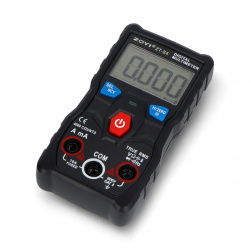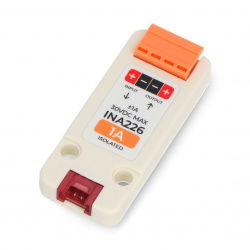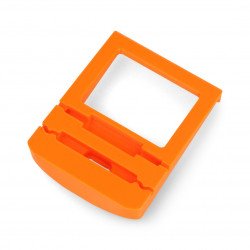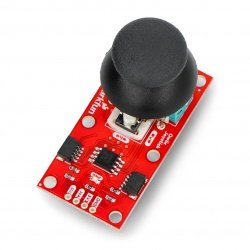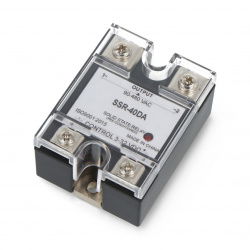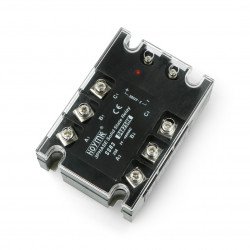The relays can be divided into two groups differing in terms of control and mechanism of work. These are electromechanical relays and SSR semiconductor relays. The second group includes relays otherwise known as electronic relays. Their construction is based on transistors, thyristors and triacs. They are logical systems for switching voltage, current and frequency. The control system has no moving parts. The control is called non-contact or electronic. SSR semiconductor relays are useful for anyone planning to build an electronic model, i.e. induction furnace or dryer. We use them in projects that require a very precise technological process, above-average speed of operation, but also a maximum limited downtime. They are used in devices controlling engines, heating devices and incandescent lamps. They are excellent for industrial control systems, intelligent lighting, temperature control, as well as electric drive control systems.
SSR relays
Semiconductor relay SSR-80A 480VAC / 80A - 32VDC
Solid state relay, single-phase SSR with the AC voltage of 480 V and constant of 32 V. Rated current is 80 A. The device does not create noise when switching.- Sale
- SPECIAL OFFERS
Solid state relay SSR-40A 480VAC / 40A - 32VDC
Single-phase solid -state relay SSR with a voltage of 480 V AC and 32 V DC. The rated current is 40 A.Three-phase Solid state relay SSR Hoymk D4825HK 3x25A 380VAC / 32DC
The Hoymk D4825HK three-phase relay is made in semiconductor technology and controlled with voltages from 3 V to 32 V DC. The maximum output voltage is 380 V.Static relay as a remedy for failures?
SSR semiconductor relays, commonly called electronic or semiconductor relays, base their operation on the use of electronic, optical or magnetic elements, excluding moving elements. This allows for long service life , quiet operation and dust resistance . There are, of course, many more advantages and few disadvantages for an electronic element, and the biggest one is probably the need to use a heat sink when we are talking about a high-power relay.
The main purpose of SSRs.
SSR semiconductor relays can be used in single-phase and three-phase installations, in systems powered by direct or alternating current , and this makes relays a very universal electronic element . Static switches are most often used in various types of electrical devices that need to control the temperature of the system, e.g. dryers, incubators, electric furnaces, incubators, etc. They are also found in cyclically operating equipment such as washing machines, pumps, and solenoid valves.
What are the benefits of using relays?
The use of relays such as SSR semiconductor relays allows for the simplification of the electrical installation . They separate power circuits from control circuits, which may be smaller in diameter and mass. Thanks to relays, the construction of various types of ignitions or switches can be simplified because they require lower currents, and thanks to the elimination of moving parts, such structures are less reliable, simpler and cheaper to repair and diagnose. A solid-state relay may be the perfect solution for your project.
SSR solid-state relays - FAQ
SSR solid state relays are a universal electronic component. They simplify the operation of a given installation or electrical device. They work well in single-phase and three-phase installations as well as in systems powered by direct or alternating current. You will find them in washing machines, pumps, furnaces and dryers, among others.
An electromagnetic relay works mainly on the principle of electromagnetic induction, which also means that when an electric current flows through a conductor, it behaves like a magnet. Electromagnetic relays feature fast operation and fast resetting. You can find a little more about it on the Botland Blog .
































































































































































































































































































































